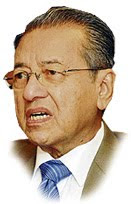Saturday May 9, 2009
Hire purchase – give the true picture
By DALJIT DHESI
LEON Lim, a young business executive with a multinational company in Kuala Lumpur, recently bought his dream car, which he will finance through hire purchase. He took a five-year loan based on new rates averaging 3.25%. From the surface, the rates looked fairly attractive.
After talking to his financial planner, he was shocked to discover that the actual or effective interest rate he was paying for the loan was in fact far higher than what was quoted to him at the onset. Truth is, Lim is one of the many others who are infuriated that they have been grossly misled. An analyst from a bank-backed brokerage said the practice of banks quoting “misleading” hire purchase rates is burdensome to consumers who are already grappling with tough times.
In addition, last month, the hire-purchase interest rates for new non-national cars increased by about one percentage point to 3.25% for loan tenures of five years and below, 3.4% for six to seven years and 3.5% for eight- to nine-year loans.
Jeremy Tan
The question is – how relevant is the 40 year old Hire Purchase Act (HPA) today and should it be reviewed or scrapped altogether?
Jeremy Tan, a licensed financial adviser with Standard Financial Planner Sdn Bhd, says with the changing financial landscape and competitiveness, the Act ought to be reviewed periodically to meet the challenges of the market place.
For purpose of transparency, he says in addition to quoting the hire purchase rate (which is normally on a flat basis), the effective interest rate (on an annualised basis) should also be revealed up front.
This will ensure that the borrower is fully aware of the financial obligation when opting for hire purchase financing.
“For example, a hire purchase rate of 3% per annum for a period of 5 years of financing carries an effective interest rate of 5.75%. Similarly for a rate of 5%, the effective interest rate charged is 9.25% for the same period!,” he says.
It should be noted that an amendment was made to the Act in 2005 to allow for the variable rate. For ensuring better transparency, the financier is obliged to state the annual percentage rate which is the effective rate in the second schedule of the Act (regardless whether the higher purchase facility is on fixed rate or variable rate basis).
Yeah Kim Leng
“The reason why the rates charged for hire purchase are higher than mortgage rates is because the risk level of the assets held by the bank as collateral is higher. The higher the risk for the bank, the higher the cost for consumers.
Essentially, there are two types of hire purchase interest rates – the flat and variable rates – which hirers can choose from. For the variable rate, interest repayments vary according to the movement of the base lending rate (BLR). If the BLR increases, the term charges will also increase, resulting in higher monthly instalments and vice versa.
The variable rate is less popular among consumers because of the unpredictability in the movement of the BLR compared with the fixed rate which remains the same throughout the tenure of the loan.
The Consumers Association of Penang (CAP) president SM Mohamed Idris, who has called for the Act to be amended, says quoting the effective interest rate will help consumers make informed decisions on their borrowings.
“Not quoting the effective interest rate is misleading,” he says.
Mohamed Idris also advocates the setting up of a comprehensive Consumer Credit Act that covers all credit facilities.
RAM Holdings Bhd chief economist Dr Yeah Kim Leng says the Act needs to be updated to reflect the current needs of consumers and agrees consumers should be provided both rates to compare with alternative financing modes such as a motor vehicle loan and so forth.
Until the Act gets reviewed however, there will be many who will continue to face the dilemma faced by Lim.
Subscribe to:
Post Comments (Atom)







































No comments:
Post a Comment